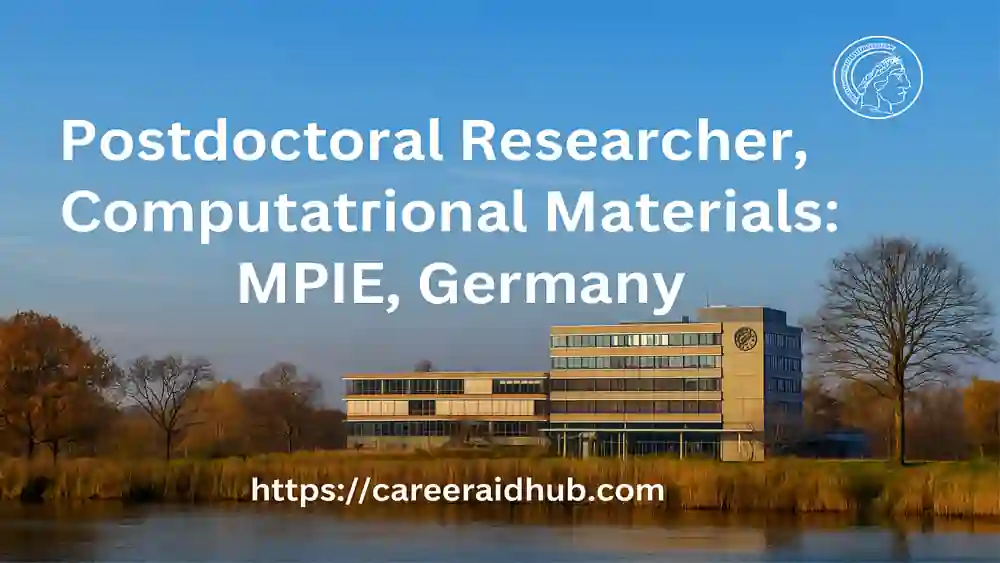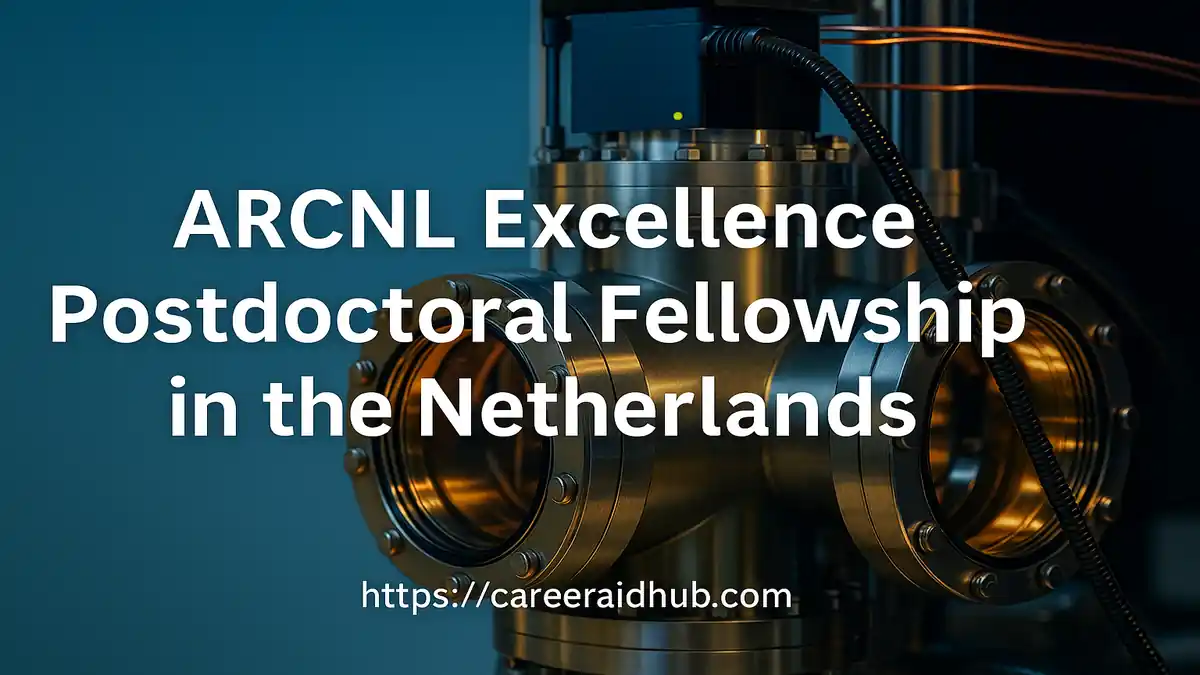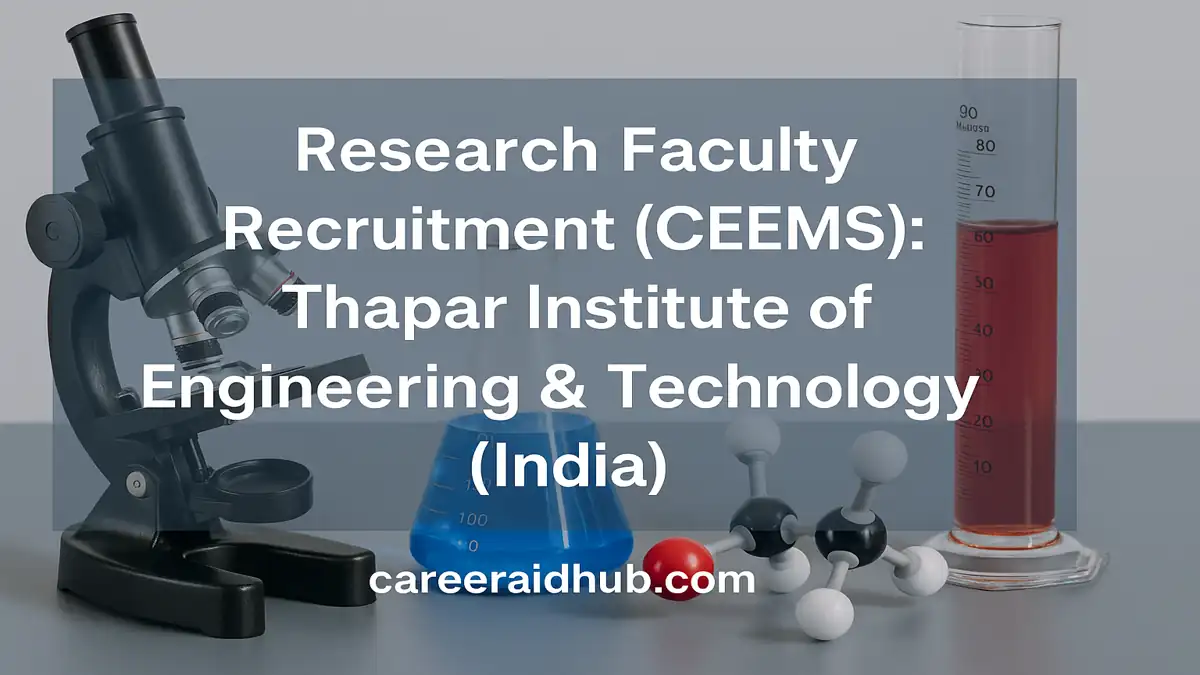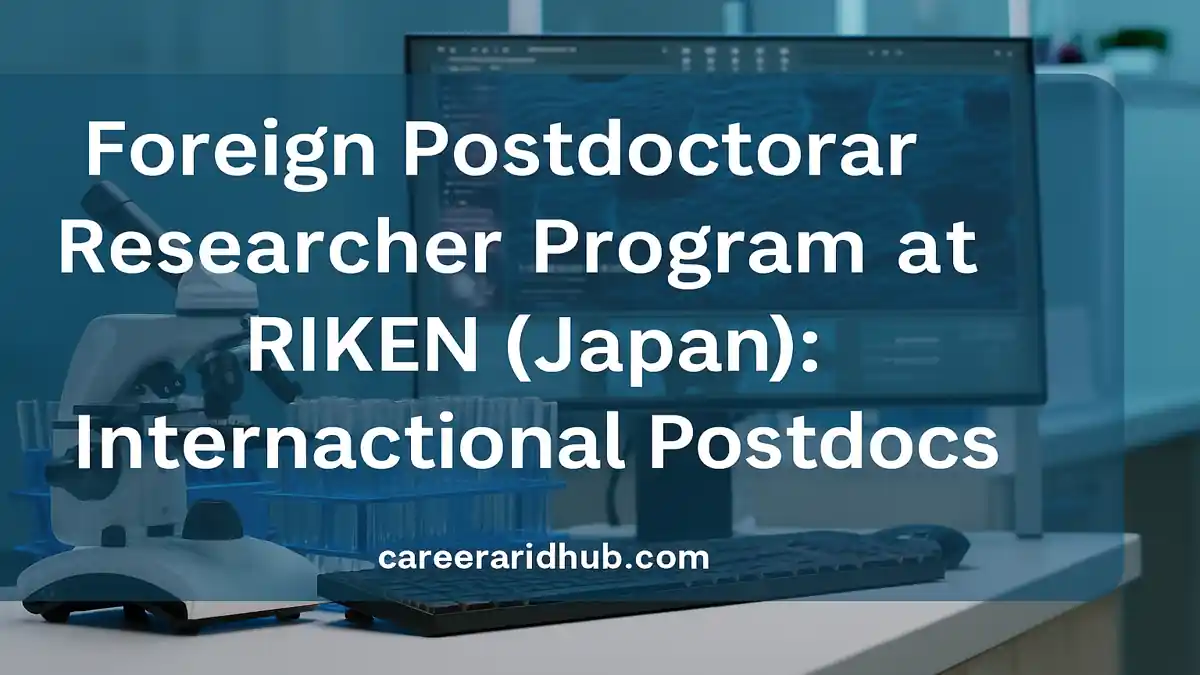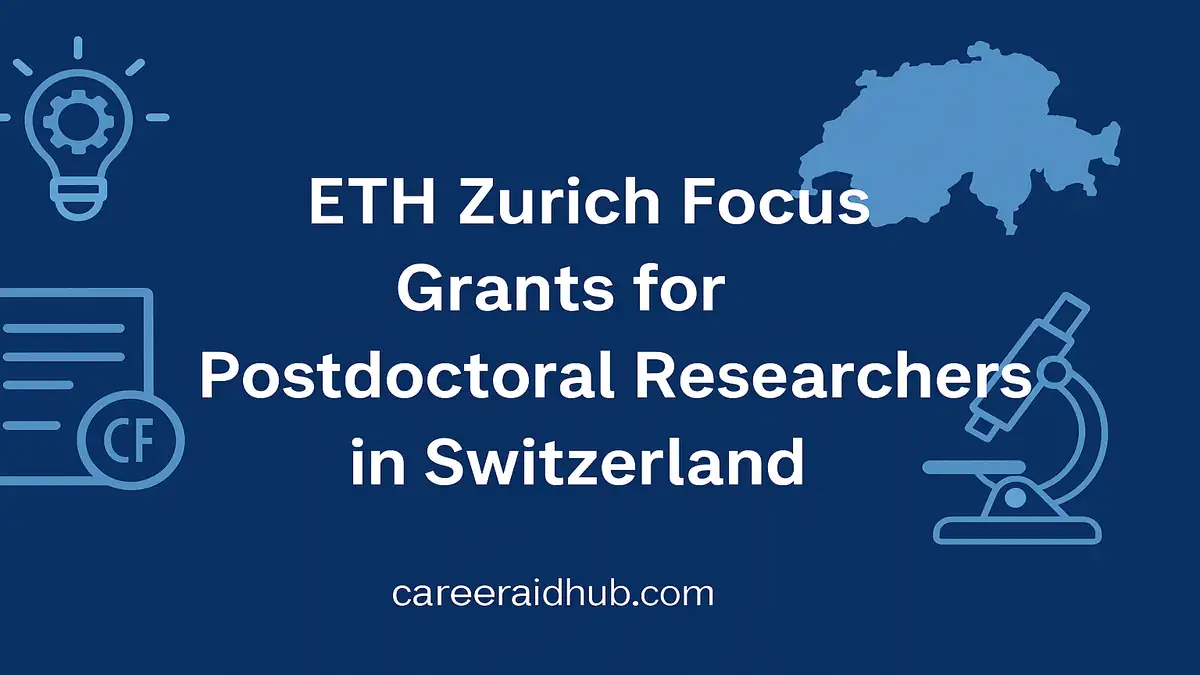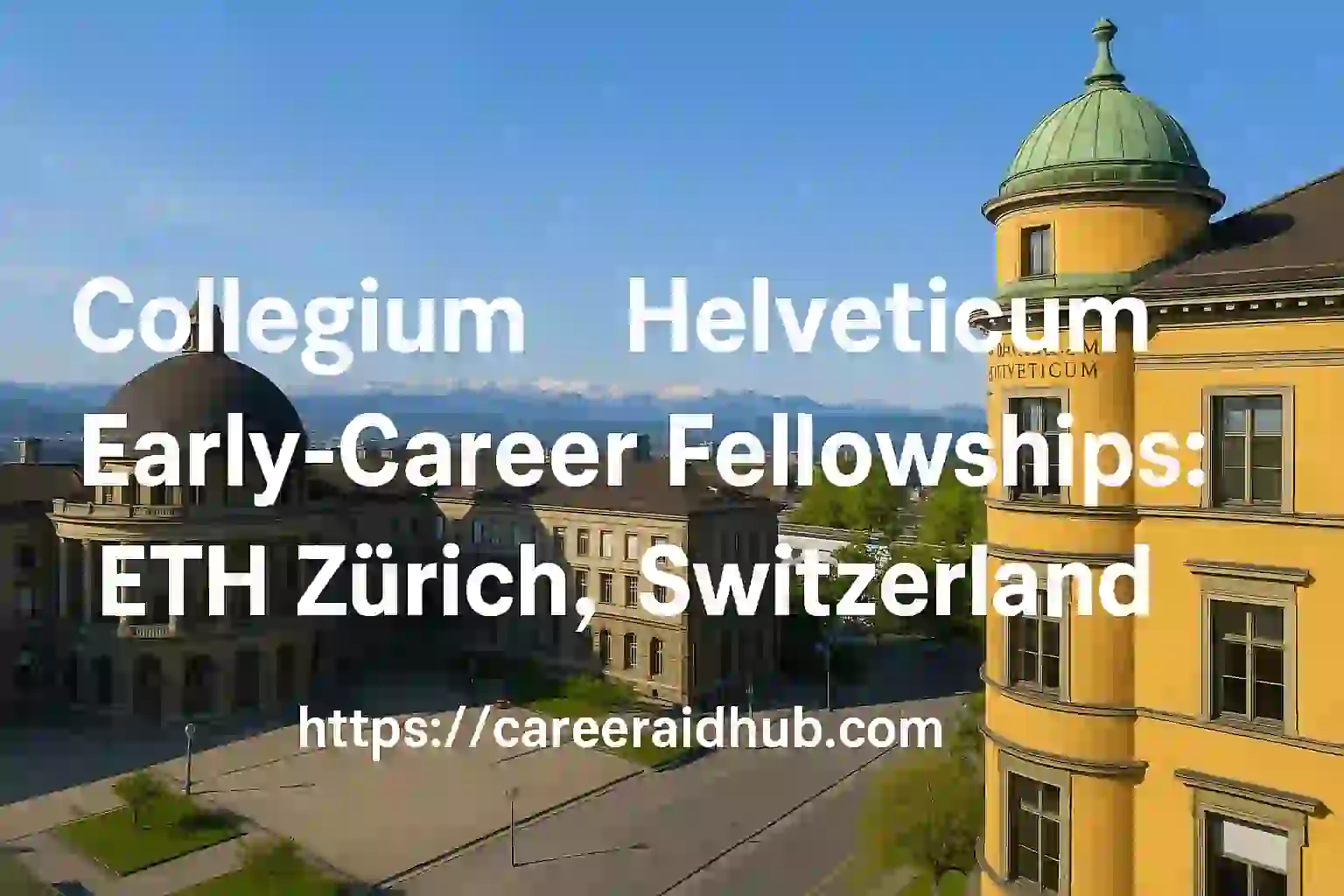Postdoctoral Researcher – Computational Materials at MPIE (2025)
The Postdoctoral Researcher – Computational Materials position at the Max Planck Institute for Iron Research (MPIE) offers a rare platform to integrate first-principles theory, multi-scale simulation, and data-driven methods to solve pressing materials challenges. From predicting phase stability to deciphering deformation mechanisms, you will build models that shorten discovery cycles and tighten the link between computation and experiment. For current vacancy status and submission instructions, always confirm details on the official MPIE careers page.
Join the Max Planck Institute for Iron Research (MPIE) in Düsseldorf as a Postdoctoral Researcher in Computational Materials. Work at the frontier of DFT, atomistics, phase-field, and machine learning to design next-generation alloys and functional materials. Collaborate closely with experimentalists, publish in top journals, and accelerate real-world materials discovery.
About MPIE
Founded in 1917, MPIE is a world-leading research institute within the Max Planck Society. It is renowned for advancing the understanding of structure–processing–property relationships in metals and related materials. The institute’s culture blends academic freedom, rigorous scientific standards, and cross-disciplinary collaboration. Consequently, postdoctoral researchers benefit from:
-
-
Direct access to cutting-edge HPC resources, advanced microscopy, atom probe tomography, and in-situ testing facilities.
-
Interactions with experts in thermodynamics, kinetics, alloy design, corrosion, mechanical behavior, and computational methods.
-
A diverse, international environment
where English is commonly used in research groups and seminars.
-
Overview of the Role
As a postdoctoral researcher in computational materials, you will develop, validate, and apply advanced models to accelerate materials discovery and performance optimization. The work typically spans electronic structure (DFT), atomistic simulations (MD/kMC), mesoscale and phase-field modeling, and machine-learning-assisted workflows. While scope differs by hosting department, the overarching aim remains consistent: predictive understanding that guides experiment and informs design.
What You’ll Work On (Scope and Themes)
-
-
Electronic-structure modeling (DFT): Calculate energetics, defects, diffusion paths, and interfacial properties; evaluate composition and temperature effects in complex alloys.
-
Atomistic simulations: Use MD and kMC to capture diffusion, dislocation behavior, phase transformation pathways, and thermal stability.
-
Mesoscale modeling: Employ phase-field and other mesoscale tools to simulate microstructure evolution during processing, service, and environmental exposure.
-
Integrated computational materials engineering (ICME): Link scales from electrons to grains; integrate CALPHAD/thermodynamic databases where appropriate.
-
Data-driven discovery: Build surrogate models, apply active learning, quantify uncertainty, and fuse simulation with experimental datasets.
-
High-throughput screening: Explore high-entropy alloys, corrosion-resistant steels, and hydrogen-compatible materials using automated workflows.
-
Collaboration is central. You will routinely partner with experimentalists (e.g., TEM, APT, in-situ mechanical testing) to validate predictions and refine models.
Key Responsibilities
-
-
Design and deliver hypothesis-driven computational studies aligned with group priorities and institute-level roadmaps.
-
Develop or extend simulation codes and ML pipelines, emphasizing reproducibility, modularity, and robust documentation.
-
Publish results in top journals, share data where feasible, and present at international venues.
-
Drive cross-functional collaboration—with internal departments, academic partners, and industry consortia where relevant.
-
Support a mentoring culture by advising PhD researchers and interns; contribute to open-science practice and data stewardship.
-
Essential Qualifications
-
-
PhD (or equivalent) in materials science, physics, chemistry, mechanical/metallurgical engineering, or a closely related area.
-
Demonstrated expertise in at least one of the following domains:
-
DFT/electronic structure (e.g., VASP, Quantum ESPRESSO, FHI-aims).
-
Atomistic simulations (e.g., LAMMPS, GROMACS) or kinetic Monte Carlo.
-
Mesoscale/phase-field modeling (e.g., MOOSE, MICRESS, DAMASK).
-
Machine learning for materials (Python ecosystem, scikit-learn, PyTorch/JAX).
-
-
Strong programming (Python/C/C++/Fortran), Git-based version control, and HPC experience.
-
A
track record of independent research evidenced by first-author papers, code contributions, or released datasets.
-
Desirable (Nice-to-Have)
-
-
Experience with multi-scale coupling and ICME pipelines.
-
Working knowledge of thermodynamics/kinetics, CALPHAD, and microstructure–property relations.
-
Comfort collaborating with experimental groups and handling characterization data.
-
Excellent scientific communication and experience supporting junior researchers.
-
Research Environment & Resources
High-Performance Computing and Software
You will access modern HPC clusters configured for electronic-structure, atomistic, and mesoscale codes. Licenses for major packages and institute-developed tools are typically available. Because workflows can be data-intensive, groups encourage containerization, workflow managers, and continuous integration for research code.
Experimental Synergy
MPIE hosts advanced facilities for synthesis, heat treatment, micromechanics, microscopy, and APT. This infrastructure enables tight compute–experiment feedback, accelerating model validation and exploratory studies.
Seminars and Community
Regular colloquia and visiting lectures expose you to new methods and case studies across materials science, mechanics, and data science. In addition, informal code sprints and reading groups often help researchers cross-pollinate ideas.
Contract, Salary & Benefits
Appointments generally follow German public-sector frameworks (e.g., TVöD) with competitive salary
How to Apply (Typical Package)
Although call-specific details vary, a compelling dossier usually contains:
-
-
Curriculum Vitae (CV): Include full publication list and links to code or data repositories.
-
Cover Letter: Explain research fit, motivation, and how your expertise will augment the host group’s portfolio.
-
Research Statement (1–2 pages): Summarize past contributions and outline a practical, testable plan for the postdoc period.
-
References: Provide contact details for 2–3 referees (or submit letters if requested).
-
Selected Works: Share PDFs/DOIs for representative publications.
-
Pro Tip: Emphasize reproducible research (e.g., containers, environment files), consistent benchmarking, and validation against experiments. Show how your models will translate into measurable design decisions.
How to Stand Out
1) Show a Clear Multi-Scale Perspective
Explain how electronic-structure insights cascade into atomistic mechanisms and, ultimately, mesoscale microstructure evolution and properties.
2) Demonstrate ML With Physics-Informed Constraints
Rather than proposing a generic neural network, articulate why the model architecture or features respect governing physics and thermodynamics. Discuss uncertainty quantification and data efficiency.
3) Practice Research-Grade Software Engineering
Highlight test suites, documentation, CI/CD, and code reviews. This rigor improves maintainability and fosters collaboration.
4) Quantify Impact
Use numbers: reduced simulation time by 40% via surrogate modeling; predicted phase stability confirmed by APT and TEM; cut hyperparameter searches by half with active learning.
5) Collaborate and Communicate
Point to joint publications, shared datasets, and widely used tools. Strong communication—written and oral—often distinguishes successful candidates.
Application Timeline & Review
Most MPIE openings specify a deadline or remain open until filled. Early applications are encouraged because groups typically review on a rolling basis. Shortlisted candidates may complete a remote or on-site interview, deliver a research talk, and participate in technical discussions with the host team.
Always verify the active status, deadline wording, and submission portal on MPIE’s official page before applying to ensure your materials meet current requirements.
Living in Düsseldorf
Düsseldorf blends a dynamic cultural scene with an efficient public-transport network and family-friendly amenities. The city’s international profile, proximity to major research hubs, and Germany’s strong social framework make it a comfortable base for postdoctoral life. Access to nature and neighboring cities further broadens weekend options.
Program Snapshot (Feature Table)
| Feature | Details |
|---|---|
| Program Name | Postdoctoral Researcher – Computational Materials |
| Host Country | Germany |
| Funded By | Max Planck Society / MPIE |
| Duration | Typically 2–3 years (varies by group/funding line) |
| Study Mode | Full-time, on-site (collaborative lab environment) |
| Eligibility | PhD in materials science, physics, chemistry, or related; strong computational background |
| Financial Support | Competitive TVöD-aligned salary; social benefits (health insurance, pension), parental leave |
| Fields of Study | Electronic-structure (DFT), atomistics (MD/kMC), phase-field/mesoscale, ML for materials, ICME |
| Deadline | Varies by call; for 2025 calls, windows often fall across Sep–Nov 2025 (we will update soon) |
| Official Website | Click Here |
Next Cycle (Forecast): Based on typical academic cycles, new postings are likely to appear Sep–Nov 2026 (we will update soon).
Conclusion
A postdoctoral position in Computational Materials at MPIE places you at the center of modern materials discovery—where physics-based modeling and machine learning converge with state-of-the-art experiments. Before you submit, confirm the latest application window and dossier requirements on the Max Planck Society’s official careers portal. With a targeted research plan, reproducible workflows, and clear impact metrics, you will be well positioned to contribute to MPIE’s mission and to launch the next stage of your scientific career.
Frequently Asked Questions
The role advances materials discovery using DFT, atomistics, phase-field, and machine learning. Moreover, you collaborate with experiments to validate predictions and publish high-impact results.
You need a PhD in materials science, physics, chemistry, or similar. Additionally, demonstrate expertise in DFT, atomistic or mesoscale modeling, programming, and HPC workflows.
MPIE typically follows TVöD public-sector scales. Therefore, you receive competitive pay, health insurance, pension contributions, and parental leave benefits.
Yes. You build physics-informed models, apply active learning, and quantify uncertainty. Additionally, you integrate ML with DFT and mesoscale simulations for faster discovery.
Submit CV, cover letter, research statement, references, and key publications. Moreover, include links to code or datasets that demonstrate reproducibility and impact.
Yes. Research groups generally work in English. However, learning basic German eases daily life and supports broader collaboration.
Typically yes, subject to regulations. Consequently, international researchers receive guidance on visas, relocation, and onboarding through institute support channels.
Panels often request a research talk and technical discussion. Additionally, expect questions on modeling choices, validation strategies, and future plans.
You access modern HPC clusters and licensed codes. Meanwhile, advanced microscopy, atom probe, and in-situ testing facilities enable tight compute-experiment feedback.
Premium Mentorship for a Stronger Application
- Premium Mentorship: personalised 1:1 guidance for this and similar opportunities
- In-depth review of your CV, academic profile, and key statements
- Aligned with international selection criteria so your profile matches what panels expect
- Stronger, more compelling narrative for highly competitive calls
- Step-by-step support from opportunity mapping to final submission (fee-based)

